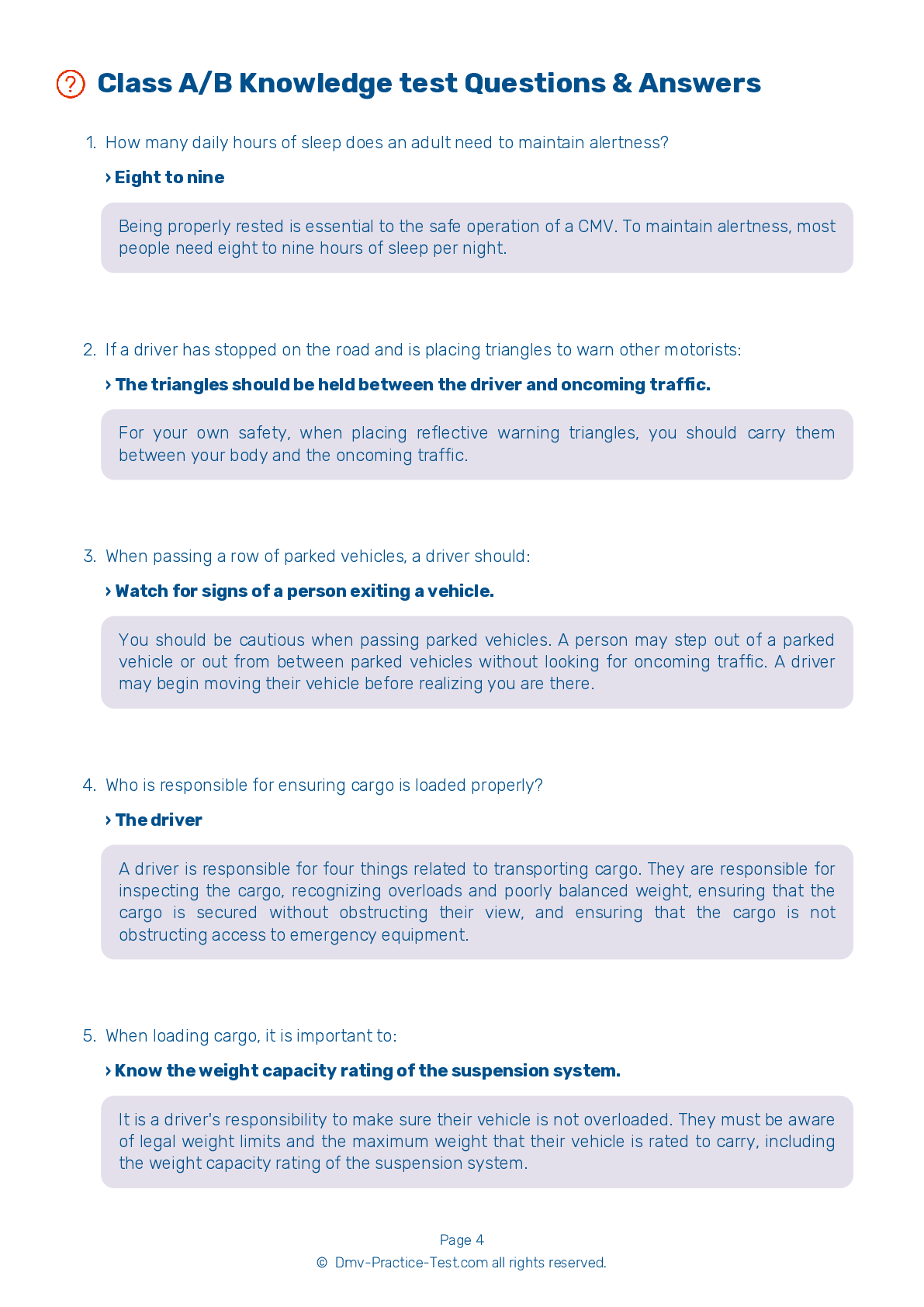Double #2
Double Triple Test | Virginia 2025 #2
Train for FREE with our Virginia CDL double triple practice test online. The official exam test consists of several obligatory parts, with all of them checking your knowledge of different blocks of road rules. If you need to obtain a VA CDL double triple license in 2025, practice as much as possible. Free sample tests published on our website will help you check and improve your knowledge and boost your grades. Please bear in mind that DMV requirements may vary from state to state.
20
16
20
1 . Tires with tread separation are:
Tires should not have tread separation. When inspecting your vehicle, you should ensure that your tires do not have tread separation.
2 . A cracked rim should be:
A driver should inspect wheels before a drive, specifically looking for damage on the wheels and rims. Wheels or rims that have had welding repairs are not safe for use.
3 . If your vehicle is hydroplaning, you should:
If your vehicle begins to hydroplane, do not apply the brakes. Instead, slow down by releasing the accelerator and pushing in the clutch. This will help you to regain traction.
4 . When making a left turn where there are two available turn lanes, a driver should begin the turn in the rightmost lane because:
If making a left turn where there is more than one available turn lane, you should always choose to begin your turn in the rightmost lane. Large vehicles often have to swing right to make left turns. Because of this, it is safer for you to have other left-turning traffic to your left instead of to your right. This will allow you to have the best possible view of other turning vehicles and will lower the risk of your vehicle colliding with them.
5 . Convex mirrors:
Convex mirrors are curved to provide drivers with wider views of the road than can be provided by flat mirrors. However, convex mirrors also make objects appear to be smaller and farther away than they really are.
6 . During a vehicle inspection test, the applicant will be asked to:
To obtain a CDL, you must take a vehicle inspection test, during which you will inspect a vehicle under the supervision of an examiner.
7 . A low air pressure warning signal should activate:
When tank pressure falls below 5 psi.



